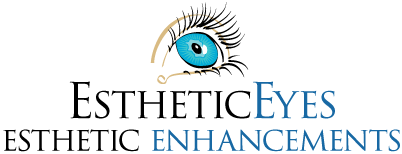For almost 75 years, Esthetic Eyes has been a leader in ocularistry, creating the most natural cosmetic appearance for our patients who have suffered eye loss or eye trauma. This includes full ocular prosthetics (e.g., prosthetic eye, artificial eye, acrylic eye) for those whose eye has been surgically removed (i.e. enucleation), as well as scleral shell prosthetics for those whose eye remains intact, yet malformed, disfigured, or non-functioning. The answer to “who” comes to Esthetic Eyes would appear seemingly straightforward – individuals who have suffered an accident or birth defect. However, there are myriad cases that bring our patients to us, each one seeking our renowned, in-depth, and proven non-surgical services.
Cases We Service
Accidents and Trauma
Accidents and Trauma affecting the eye can and do occur when least expected. Many of our patients were not born with ocular birth defects, but experienced eye loss or eye damage while going about their daily activities. Be it a workplace accident, an incident while traveling abroad, or simply put—in the wrong place at the wrong time—their lives were suddenly and tragically changed. Unfortunately, with Accident and Trauma cases, there is no science, no known cause, no preventative measure—they just happen.
Disease
Diseases of the eye can cause subsequent eye loss, where the degeneration progresses over time, leading to permanent blindness with no treatment or cure. Such diseases include:
- Diabetic Retinopathy is the general term for all disorders of the retina caused by diabetes. In severe cases, the result can be complete loss of vision. Diabetic Retinopathy causes retinal blood vessels to bleed or leak fluid, distorting vision. It is the most common cause of vision loss among people with diabetes and a leading cause of blindness among working-age adults.
- Macular Degeneration is the most common cause of legal blindness in people over 60, with the progressive deterioration of a critical region of the retina, the macula. Causes stem from a combination of hereditary, environmental, and metabolic factors. Highly reactive free-oxygen radicals (e.g., long-term light bombardment from UV rays and blue light, smoking, high-fat diet) contribute to the damage and destruction of the macula.
- Failed Cataract Surgery. Permanent loss of vision can be caused by surgical complications (i.e., Infections, Inflammation, Retinal Detachment, and Vitreous Hemorrhage)
- Retinal Detachment. In untreated cases, permanent vision loss occurs when inflammation, vascular abnormalities, or injury causes fluid to build up, moving or pulling the retina from its normal position.
Tumors
- Retinoblastoma is a malignant tumor and cancer of the retina, most common among children.
- Malignant Melanomas. Ocular melanoma (a tumor in or around the eye) is a type of cancer that develops in the cells that produce pigment. Unfortunately, most eye melanomas form in the part of the eye you can’t normally see when looking in a mirror and can be difficult to detect.
Many forms of treatment for small tumors of the eye involve radiation, chemotherapy, anti-cancer drugs, laser therapy, and surgery. More advanced stages and larger tumors offer little hope of regaining vision. The most effective treatment is an enucleation, the removal of the eye.
Congenital Ocular Birth Defects
- Peters Anomaly is a rare congenital error in the development of the eye that occurs during the embryonic stage. The central area of the cornea become opaque, and the iris has holes and may be stuck to the back of the cornea and the lens.
- Coats’ Disease involves abnormal development in the blood vessels behind the retina. The blood-rich retinal capillaries break open, resulting in subretinal hemorrhage and retinal detachment.
- Microphthalmia is an eye abnormality in which one or both eyeballs are abnormally small.
- Anophthalmia is the complete absence of an eye caused by a defect in embryonic development.
Esthetic Eyes specializes in working with infants and children suffering from congenital ocular birth defects. We strategically implement non-surgical lid and socket therapy for a prosthetic eye (i.e., eye prosthesis, artificial eye), beginning in infancy if possible, to promote soft tissue definition and realignment while stimulating bony orbital growth.
Our Dedicated Mission and Extended Professional Services
As you can see, there are countless reasons our patients find themselves in our care. And in each case, Esthetic Eyes works to provide the best possible solution, where competing ocularists fall short. We offer a full range of comprehensive non-surgical services, including full ocular prosthetics (i.e., prosthetic eye, artificial eye, eye prosthesis, and scleral shell), our patented digitally enhanced iris technology, lid and socket movement therapy, as well as Esthetic Enhancement final touch treatments that are designed to improve the natural structure and motion of the eye (see more on our Services Page). Esthetic Eyes and Esthetic Enhancements is the new one-stop ocularist practice, preserving our refined custom-made, now patented digital eye technology, prosthetics and maintenance services combined with premier tissue restoration enhancements for the most natural and balanced facial symmetry.

